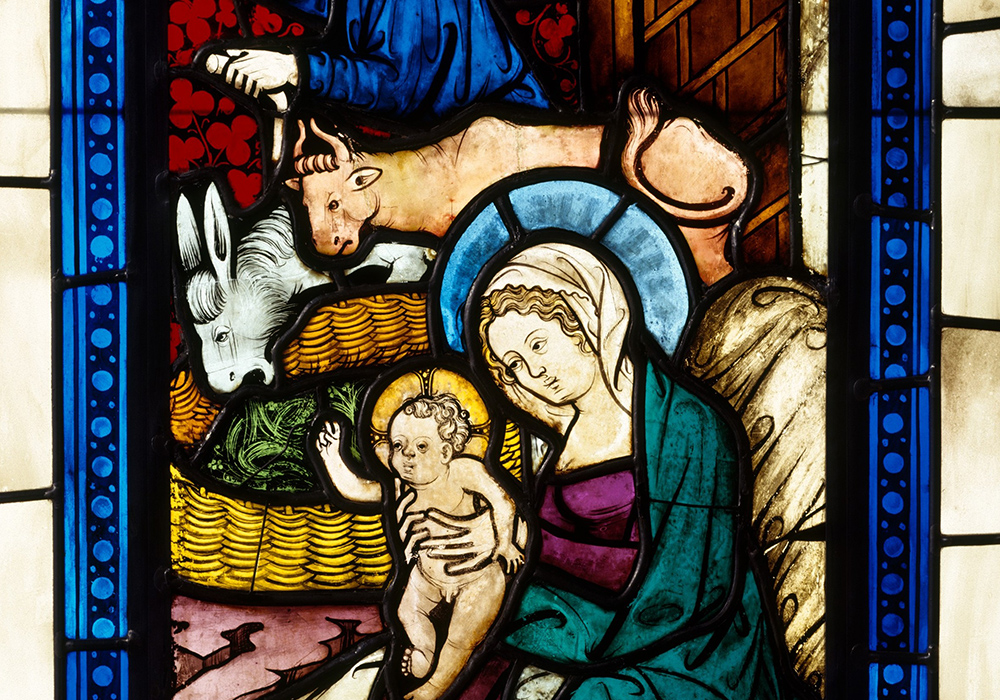
"Adoration of the Magi from Seven Scenes from the Life of Christ," an Austrian glass-stained work circa 1390 (Metropolitan Museum of Art)
In the Eucharist, we not only drink the blood of the Lamb that takes away the sin of the world, but also the blood of the Ox who raises us to heaven and returns us to Eden.
Jesus the Ox is not some esoteric mystical teaching, but contained within the words of transubstantiation: "The blood of the new and eternal covenant, which will be poured out for you and for many." These words, drawn from the words of Jesus in the Gospels of Mark (14:24) and Matthew (26:28), point back to Exodus 24, arguably the high point of the Old Testament.
In Exodus 24, the people are at Mount Sinai. God has led them out of slavery in Egypt and into the heart of the wilderness, where God will conduct a sacred adoption ceremony, what theologian Scott Hahn calls "the culmination of the Passover." During the ceremony, the people sacrifice twelve bulls. Moses pours half the blood on the altar and sprinkles the other half on the people, saying "This is the blood of the covenant."
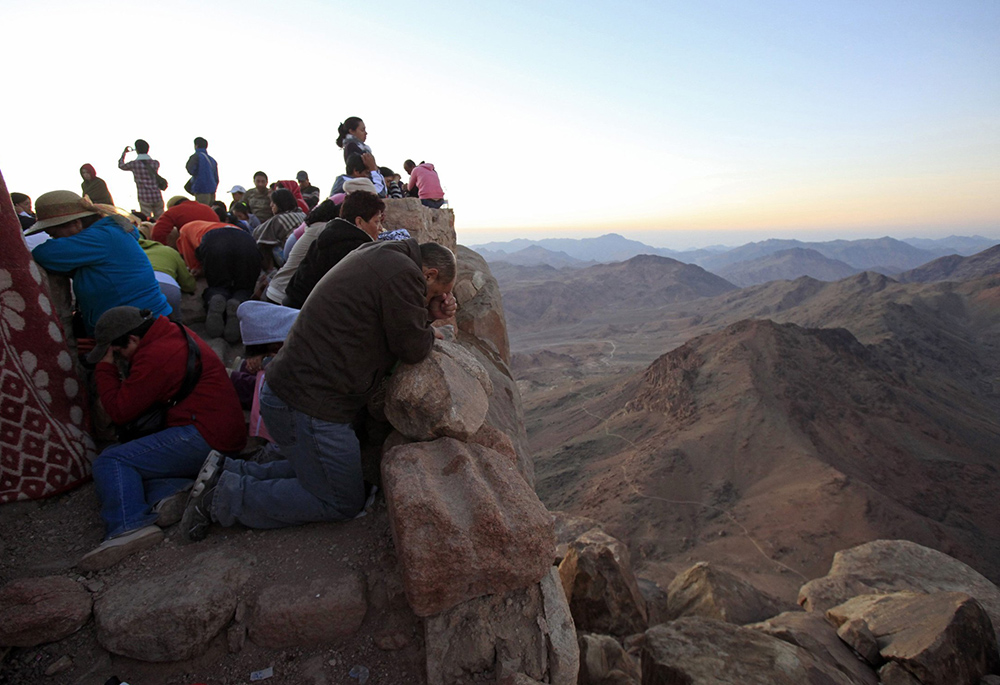
Worshippers pray outside a church on the summit of Mount Sinai during sunrise in the Sinai Peninsula July 23, 2010. (CNS/Reuters/Goran Tomasevic)
Why bulls? In biblical Israel, cattle was the culmination of economic, cultural and religious life. Cattle offered the highest single source of calories and nutrition to human beings. This is reflected in the financial value; one source gives the value at one shekel for sheep and 10 for a young bull. Unlike sheep, cattle provide labor for farming and construction work due to their size and strength.
Just as important is the symbolic value of cattle. "Cattle were an important status symbol," author Elizabeth Fletcher explains. "In biblical times a man's wealth was measured by the number of cattle he owned. The ox in a stall was a symbol of luxury, of having 'arrived'." Cattle as status symbols flowed from deep cultural roots in that it defined the early Hebrews' identity. In Genesis, Joseph instructs Jacob's sons to tell Pharoah, "We your servants, like our ancestors, have been owners of livestock from our youth until now" (Genesis 46:34).
Because of their value, cattle were the highest offering for sacrifice. Psalm 69, cited in Passion accounts, prophesies that the triumphant Christ's praise "will please the Lord more than oxen, more than bulls with horns and hooves" (Psalm 69:32).
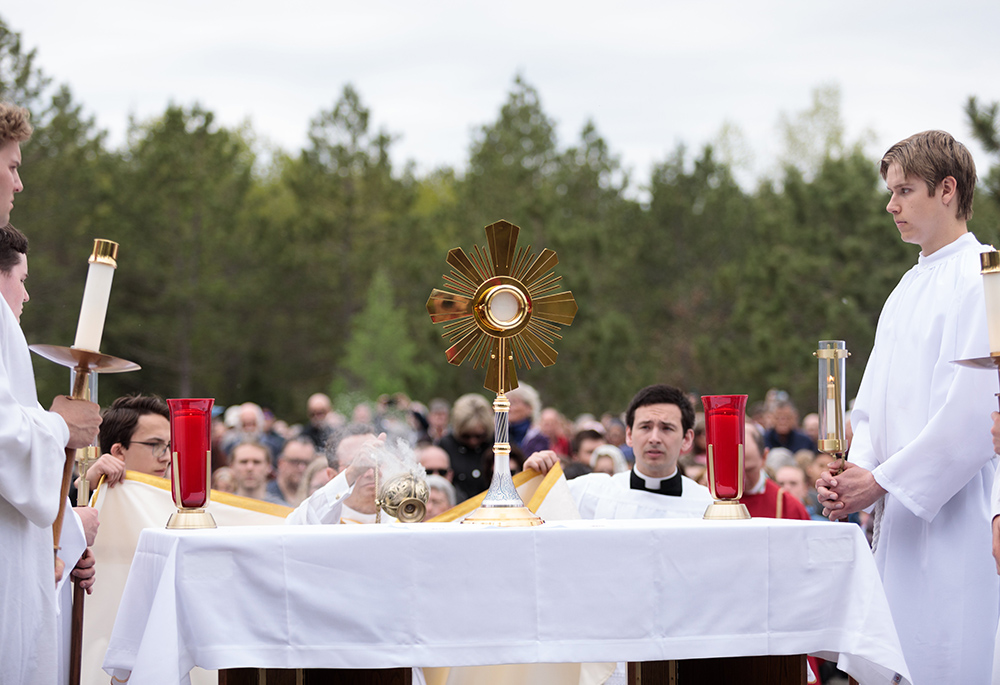
The Eucharist is displayed for pilgrims' veneration by Bishop Andrew Cozzens of Crookston, Minnesota, along the procession to the headwaters of the Mississippi River May 19 for the launch of the Marian Route of the National Eucharistic Pilgrimage. (OSV News/Courtney Meyer)
A key component of Old Testament sacrifices is that most often sacrifice was made so that people could eat. This confluence of prayer, food and community is seen in Samuel's anointing of David (1 Samuel 16). God sends Samuel to Bethlehem in the midst of conflict to anoint one of Jesse's sons as king. God tells Samuel to bring a heifer (a young cow that has not yet born a calf) to sacrifice. Samuel gathers the community and they eat. Only then is David chosen and anointed.
Those of us today with easy access to high fat and protein food miss what a big event the sacrificial meal of cattle was at that time. Meat, particularly beef, was rarely consumed in biblical Israel. A lamb is a family-sized meal. A head of cattle (one animal) produces about 400 lbs. of meat, enough for a community.
At Sinai, the sacrifice of 12 bulls would have resulted in about 4,800 lbs. of meat. Think of the community connection and celebration that would accompany such an event. In the context of never-ending manna, what the Midrash calls "starvation food," that would be quite the sacrificial meal, marking the culmination of the Passover and Exodus journey.
Why on Sinai? The land. Pope Benedict XVI, in his book The Spirit of the Liturgy, emphasizes that the full flowering of monotheism did not occur in urban or even cultivated lands, but in the wilderness, "where heaven and earth face each other in stark solitude."
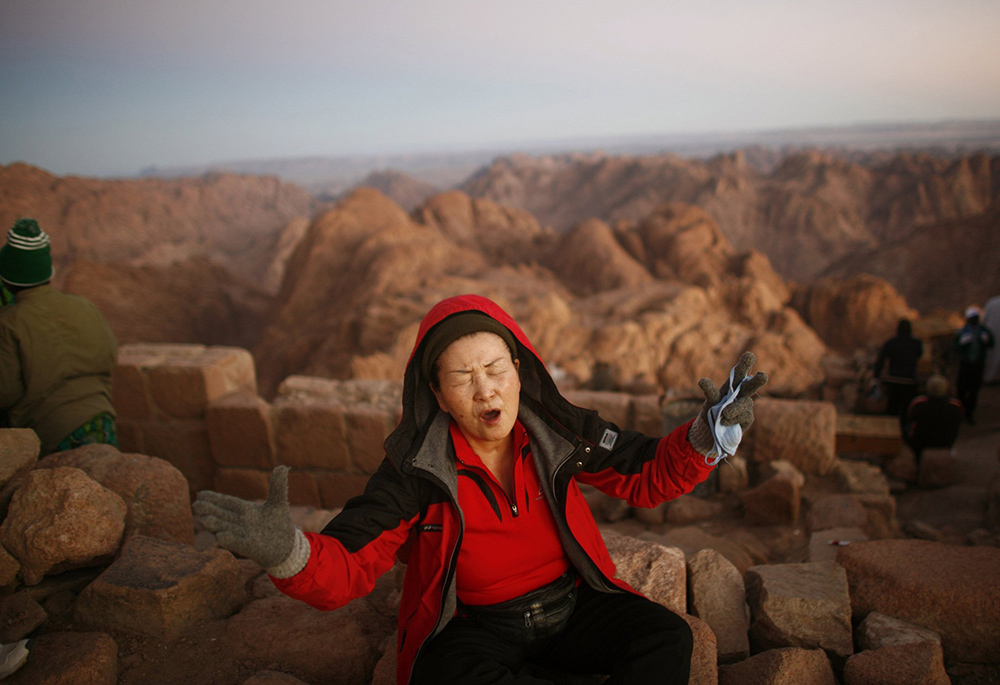
Pictured is a woman praying on Mount Moses in Sinai, Egypt. (CNS file photo/Reuters/Goran Tomasevic)
It's also important that it's red earth. Jabal Musa, the traditional location of Mount Sinai, is about the reddest place on earth, especially at sunrise and sunset — the whole range is "rich, reddish granite," writes Bruce Feiler in Walking the Bible, and the summit provides a "360-degree panorama of blood-colored mountains" — creating an important constellation of meaning. The words red, blood, earth and Adam come from the same root in Hebrew. (This constellation also comes together in the ceremony of the red heifer).
Thus, when Israel offers sacrifice and the blood of bulls is splashed on the altar that represents God and on the people, making them blood relatives, a new tribe, there's a dual effect. Moses and the elders "are taken up into heaven itself," but there is also a connotation of returning to the earth, to the Eden which is the origin and goal of the journey of Israel. Blood, which is literally life in the Bible (Leviticus 17:11), formalizes the transformation on Sinai: "When man meets God on the mountain in the wilderness," Benedict writes, life becomes "real life."
Not much in Exodus 24 is about what this "real life" looks like. The Book of Job gives us four chapters (38-41), by far the longest and most detailed theophany in the Bible, more fully revealing the character of God's life of outflowing creative love in the life of sea, stars and great animals — blood and earth.
Advertisement
"Have you ever in your lifetime commanded the morning and shown the dawn its place for taking hold of the ends of the earth, till the wicked are shaken from it?" (Job 38:12-13). "Does the eagle fly up at your command to build his nest up high?" (Job 39:27). "Will the wild ox consent to serve you, or pass the nights at your manger?" (Job 39:9).
At these questions from God, Job is struck silent — the answer is clearly no, Job does not participate in divine life in this way. He worships, and his friends offer sacrifice of seven bulls and seven rams.
But at Sinai, in a sense, the answer to God's questions of Job is yes. To be taken up into the blue sapphire of Heaven is to command the morning and show dawn its place. The eagle has flown at its command, the people of Israel are eaglets born in God's pinions and on God's wings (Deuteronomy 32:11 and Exodus 19:4). The wild ox has consented to serve Israel: "God brings them out of Egypt with horns (viz., might) like that of a wild ox" (according to biblical scholar Timothy Ashley, this is the best translation of Numbers 24:8). The Wild Ox from then on passes the night at their manger and journeys with the people in the Tabernacle and makes a home with them in the Temple, the new Eden.
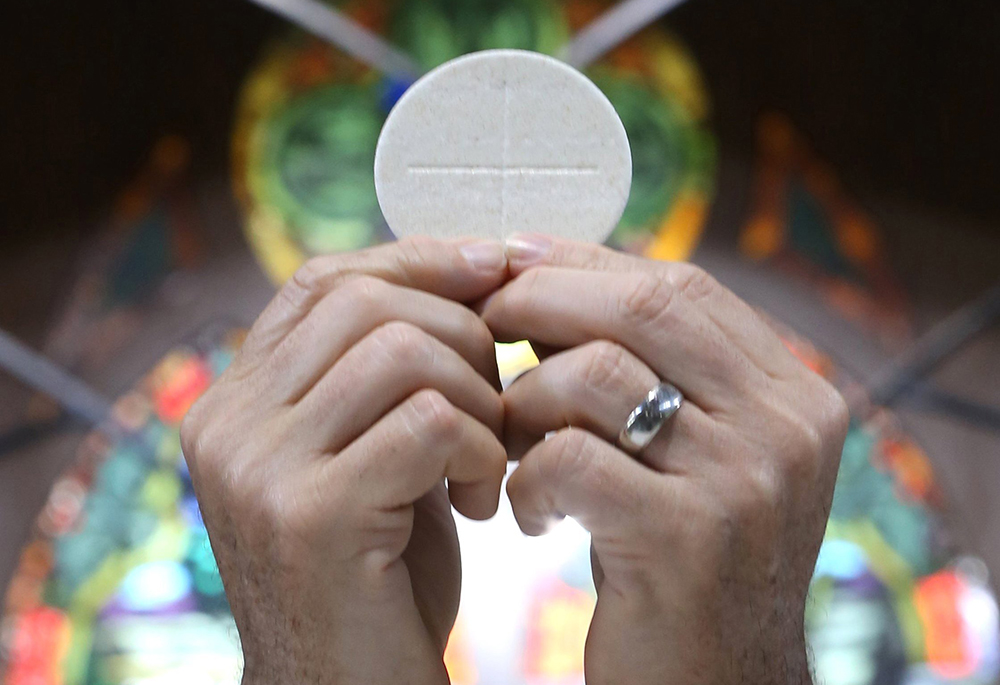
A priest raises the Eucharist in this illustration. (OSV News/CNS file, Bob Roller)
Jesus is the Lamb of God, whose paschal sacrifice takes away the sin of the world and accomplishes the exodus out of urban chaos and slavery. And also the church fathers and saints saw Christ as an ox, such as John, bishop of Rouen (c. 1000): "He offered Himself (as in image and type of the oxen for the sacrifice), and He was made a holocaust and a pacific victim."
At the Sinai peak, his blood raises us to Heaven and returns us to Eden through a new kinship relationship with God. Where the lamb image emphasizes expiation for sin, the bull image focuses on the raising up of humanity to participate in divine nature.
This is why Jesus, the Horn of Salvation, situated his command to drink his blood in the highest possible sacrifice of cattle in the blood-colored mountains of Sinai, that we might have in the Eucharist the real life of blood, heaven and earth.







